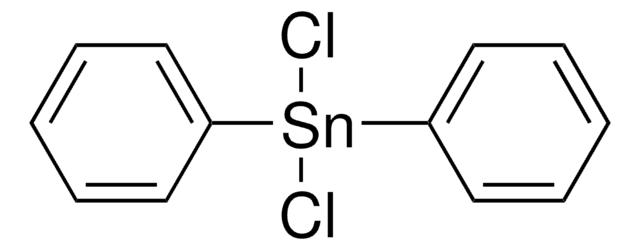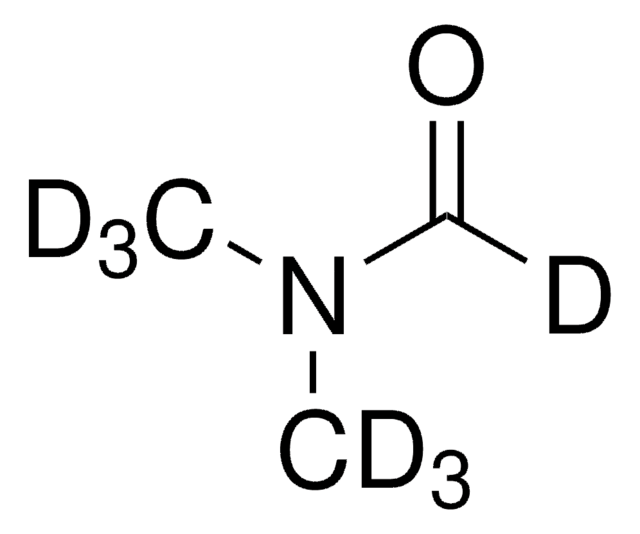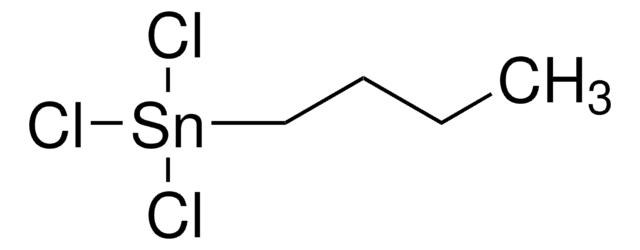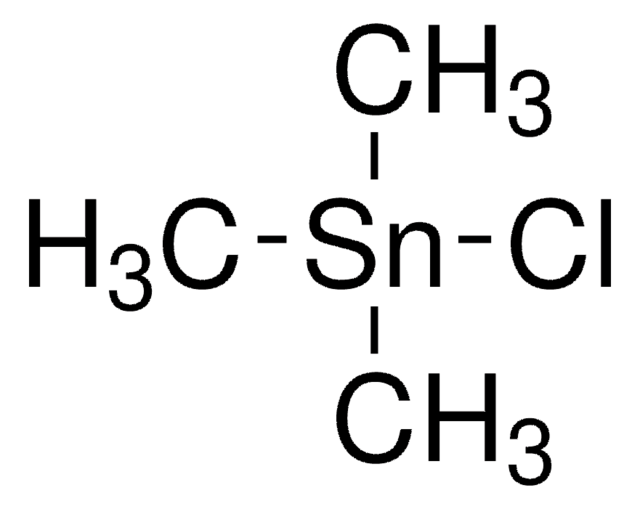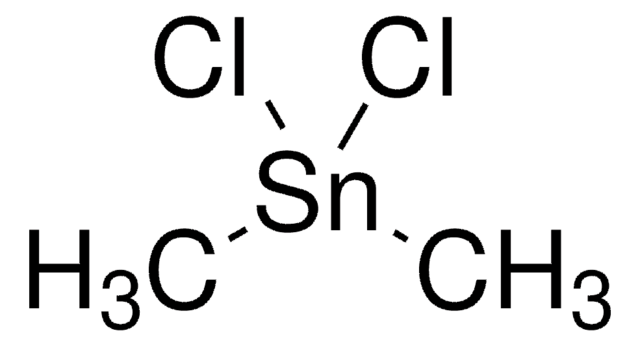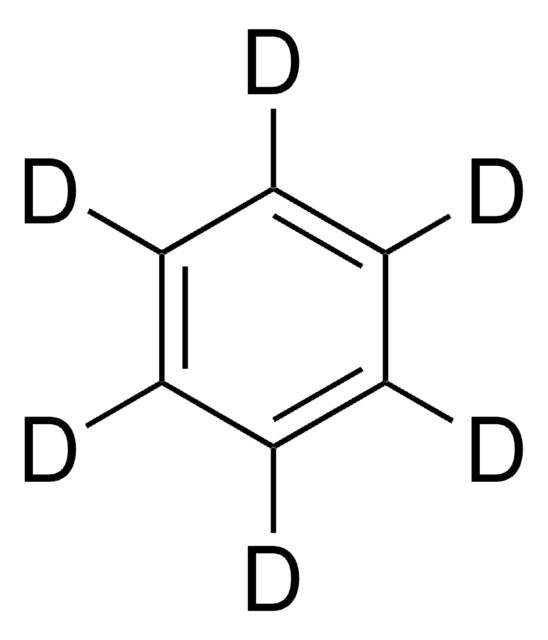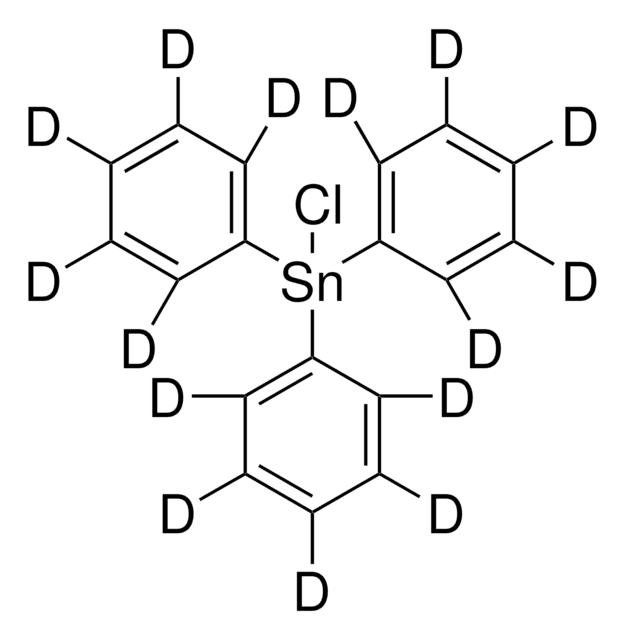Kluczowe dokumenty
277231
Phenyltin trichloride
98%
Synonim(y):
Trichlorophenylstannane
About This Item
Polecane produkty
Poziom jakości
Próba
98%
Formularz
liquid
współczynnik refrakcji
n20/D 1.585 (lit.)
bp
142-143 °C/25 mmHg (lit.)
gęstość
1.839 g/mL at 25 °C (lit.)
ciąg SMILES
Cl[Sn](Cl)(Cl)c1ccccc1
InChI
1S/C6H5.3ClH.Sn/c1-2-4-6-5-3-1;;;;/h1-5H;3*1H;/q;;;;+3/p-3
Klucz InChI
UBOGEXSQACVGEC-UHFFFAOYSA-K
Powiązane kategorie
Zastosowanie
- In the preparation of organotin(IV) complexes as potent antimicrobial agents.
- As a reactant in the Stille coupling reaction catalyzed by peptide-templated Pd nanoparticles.
- As a tin (Sn) source in the synthesis of tin-doped TiO2 photoanodes applicable in dye-sensitized solar cells.
Hasło ostrzegawcze
Danger
Zwroty wskazujące rodzaj zagrożenia
Zwroty wskazujące środki ostrożności
Klasyfikacja zagrożeń
Aquatic Acute 1 - Eye Dam. 1 - Skin Corr. 1B
Kod klasy składowania
8A - Combustible corrosive hazardous materials
Klasa zagrożenia wodnego (WGK)
WGK 3
Temperatura zapłonu (°F)
235.4 °F - closed cup
Temperatura zapłonu (°C)
113 °C - closed cup
Środki ochrony indywidualnej
Faceshields, Gloves, Goggles, type ABEK (EN14387) respirator filter
Wybierz jedną z najnowszych wersji:
Masz już ten produkt?
Dokumenty związane z niedawno zakupionymi produktami zostały zamieszczone w Bibliotece dokumentów.
Klienci oglądali również te produkty
Nasz zespół naukowców ma doświadczenie we wszystkich obszarach badań, w tym w naukach przyrodniczych, materiałoznawstwie, syntezie chemicznej, chromatografii, analityce i wielu innych dziedzinach.
Skontaktuj się z zespołem ds. pomocy technicznej